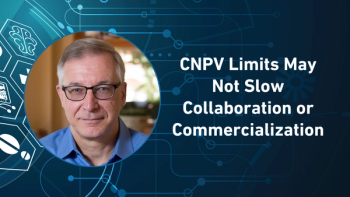
HDA 2025 Traceability Seminar: DSCSA Compliance Ushers in a More Secure and Transparent Pharma Supply Chain
Kala Shankle, JD, HDA’s vice president of regulatory affairs, shares that as DSCSA traceability requirements take full effect, distributors and trading partners are preparing for long-term gains in supply chain security, recall efficiency, and counterfeit prevention.
In a video interview with Pharma Commerce, Kala Shankle, JD,HDA’s vice president of regulatory affairs, discussed how this year’s Traceability Seminar brought together stakeholders from across the pharmaceutical supply chain, where the prevailing tone was one of pragmatic focus on the “last mile” of compliance implementation. Attendees concentrated on operational readiness ahead of upcoming regulatory milestones and discussed the real-world challenges that still stand between companies and full compliance with traceability standards.
While the FDA was unable to present formally, several former agency officials attended and contributed valuable insights, grounding the event’s discussions in current regulatory perspectives. One of the most well-received sessions featured representatives from various state boards of pharmacy, who detailed the tools and processes used in counterfeit drug investigations. In particular, they discussed the use of the HDA Verification Router Service as a key resource in identifying and mitigating threats to supply chain security.
Technical sessions also drew strong engagement, particularly those covering exception handling and barcode quality—issues that continue to cause friction in day-to-day operations. These conversations provided clarity on the ongoing technical and logistical barriers that stakeholders face as they work toward compliance.
Looking ahead, the seminar also explored what’s next for distributors and large dispensers beyond the 2024 deadlines. Discussions centered on the still-pending NDC Final Rule and the forthcoming national standards for wholesale and 3PL licensure, both of which are expected to introduce new operational complexities once finalized. These forward-looking conversations underscored a shared understanding across the industry: while compliance is within reach, regulatory evolution will continue to drive change—and collaboration—across the entire pharmaceutical supply chain.
Shankle also dove into industry’s overall preparedness for DSCSA compliance; how FDA guidance evolved in the lead-up to this exemption deadline; what distributors need to know about regulatory expectations for enforcement; and much more.
A transcript of her conversation with PC can be found below.
PC: What are the most important long-term operational or strategic implications of DSCSA compliance for distributors and the broader healthcare supply chain?
Shankle: The traceability or the interoperable data exchange aspect of the DSCSA finally coming into effect is going to mean several things for the supply chain. One, finally, the intent of the law and the spirit of the law will actually come into effect. This means better security and integrity of our supply chain, better recall processes, better finding of counterfeit drugs/stolen product as just an overall more integrated, transparent, and secure supply chain, one that's very good for stakeholders and patients.
The other thing is that as we see more and more enforcement and companies across the entire industry really working on their SOPs and training their people, and really honing that expertise—one of our members used muscle memory to identify products that are problematic and that are kind of flowing through the supply chain—that value is going to be very important in contract processes and in dealing with your trading partners, so that's something that you're going to care a lot about. Are you DSCSA compliant? Have you been following things? Do you have warning letters? Are you somebody that is more engaged in the gray market?
That was the whole reason the DSCSA was passed, because there were a lot of gray market issues going on in the supply chain. This particular law is meant to address those sort of bad actors, and hopefully, the good actors will lead the charge on creating a more secure supply chain, and those bad actors will sort of fall to the wayside in terms of, you're not going to want to trade with them. Of course, that's a business-to-business decision, but I think overall, that is the intent of the law, is to keep good actors doing good things and bad actors out of our supply chain.
Newsletter
Stay ahead in the life sciences industry with Pharmaceutical Commerce, the latest news, trends, and strategies in drug distribution, commercialization, and market access.





